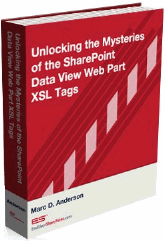Adoption Tip 3 of 8: Communicate the Context of SharePoint in the Environment
 Author: Lee Reed
Author: Lee Reed
While a moose crossing sign may make sense when you are traveling across the wide open spaces of Alaska, it certainly doesn’t make sense when you are driving in downtown Atlanta. The context of the sign simply doesn’t resonate in Atlanta as it does in Alaska. In similar fashion, the context of SharePoint must be communicated to your users in order for them to adopt it.
Is SharePoint Replacing Any Existing Systems?
To provide the proper context for SharePoint’s use in your company you need to address whether or not SharePoint will replace any existing software systems. If you don’t answer this question for your users your adoption will be negatively affected because people won’t know what system to use when. If SharePoint is replacing an existing system, educate the user community on why it’s replacing the prior solution and why SharePoint will be better than the prior system. If SharePoint isn’t replacing an existing system, educate the user community about when they will use SharePoint’s capabilities and when they will use the other solution. Don’t simply assume that your people will figure out what system to use over time. Remember, our focus here is to enhance the adoption of SharePoint. Making it easy for people to understand what software system they should use and when provides context to your business.
“When should I use PeopleSoft/HRIS/CRM vs. SharePoint?”
User confusion frequently derails even the best of SharePoint adoption initiatives. Because SharePoint has so many capabilities, users can easily become confused about when they should use a solution built in SharePoint and when they should use other, more focused software packages. If someone starts to build a contact management solution on SharePoint that ‘competes’, in your users minds, with the existing CRM solution, you will need to help them understand which system should they use when capturing contact information. Providing an easy to understand description of each of the systems they use and what the goals of each are will go a long way to helping your users correctly choose what application they should use for a particular purpose. Help your content owners to socialize this information with their department’s users so that the message is correctly and consistently reinforced.
What is Executive Management’s Goal for SharePoint?
Before communicating the context of SharePoint to your users, facilitate a meeting with executive management so they can assist you to define what role SharePoint will play in the organization. Without executive buy-in regarding how SharePoint will be positioned in your environment, the user community may not put much emphasis on using SharePoint. When people understand that their managers have goals and expectations for SharePoint, and when those expectations are socialized, it gives people license to use the platform and learn the features. When your community of users understand what the goals of executive management are they will also build more focused solutions using the tools SharePoint provides for their teams and departments and may even socialize them across the enterprise. Without executive buy-in and understanding of what SharePoint can do you may find that this fantastic software is not rapidly adopted.
Educate Your Users on SharePoint’s Disaster Recovery & Backup Plans
You may be thinking that your users simply won’t care about your disaster recovery and backup plans for SharePoint. In actuality, they probably do care but they just don’t realize the impact of these items or they aren’t certain how to verbalize their concerns. Their lack of knowledge or understanding of these areas can, however, present a stumbling block regarding your user adoption efforts. Having a user community that doesn’t understand how their business critical data is being cared for after it’s placed on SharePoint may cause them to resist placing their information on the system. If they don’t understand how soon the business data they store on SharePoint will be available in the event of a server crash or building sprinkler malfunction, their confidence will be lacking when it comes to placing information that they consider mission critical on SharePoint. Eliminate the concern by informing them exactly how their information is being backed up and managed.
 Author: Lee Reed
Author: Lee Reed
Lee is a SharePoint Consultant in Atlanta, GA and has held technology leadership positions in the healthcare, commercial real estate, multifamily, consulting and legal industries. He is laser focused on assisting companies to leverage their technology investments with a driving passion around demystifying technology.
- Adoption Tip 1 of 8: Use SharePoint’s Flexibility for Success
- Adoption Tip 2 of 8: Educate Your SharePoint User Community on the Tool
- Adoption Tip 3 of 8: Communicate the Context of SharePoint in the Environment
- Adoption Tip 4 of 8: Rate Your Organizations SharePoint Collaboration Maturity
- Adoption Tip 5 of 8: Give People a Reason to Visit
- Adoption Tip 6 of 8: Foster a Culture of Collaboration
- Adoption Tip 7 of 8: Define What Collaboration Looks Like
- Adoption Tip 8 of 8: Implement SharePoint ‘In the Flow’ of Business












 on
on
Thanks Lee, this series is great. Stuff I’m wrestling with right now in prep for 2010.
Joan,
Thanks for the feedback. As you are well aware, the concepts of user adoption are the same whether it’s SharePoint 2007, 2010 or 2028. It’s also true that if you don’t have user adoption, you don’t truly have a SharePoint system….it’s simply a “Point” system. (SharePoint without the ‘Share’)